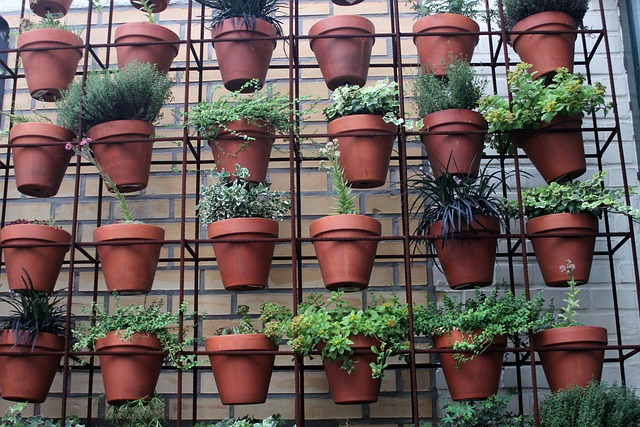
Welcoming the vibrant beauty of houseplants into your home is like inviting a slice of nature indoors. These leafy companions not only add aesthetic appeal but also contribute to a healthier living environment. However, the journey of nurturing houseplants goes beyond mere decoration. To truly enjoy the benefits and longevity of these green companions, understanding how to clean and care for them becomes paramount.
In this comprehensive guide, we will explore the intricate details of maintaining and cleaning houseplants, demystifying the art of indoor gardening for enthusiasts at every level. From selecting the right plants for your living space to mastering the nuances of watering, soil care, and pest prevention, we’ll delve into the fundamental aspects that contribute to the well-being and vitality of your indoor garden. So, let’s embark on a journey of botanical discovery, unlocking the secrets to cultivating a thriving and visually stunning indoor oasis.
How to Choose the Right Houseplants
Consider factors such as light conditions, humidity levels, and your own commitment to care.
1. Light Requirements
Different plants have varying light preferences. Place high-light plants like succulents in sunny spots, while low-light varieties like snake plants can thrive in shadier corners.
2. Humidity Tolerance
Understanding your home’s humidity levels is crucial. Tropical plants often require higher humidity, while desert plants can withstand drier conditions.
3. Your Commitment Level
Some plants demand more attention than others. If you’re a beginner or have a busy lifestyle, start with low-maintenance plants like pothos or spider plants.
Essentials of Watering
Proper watering is the foundation of plant care. Overwatering or underwatering can lead to issues like root rot or dehydration.
Watering Frequency
Stick your finger into the soil up to the first knuckle; if it feels dry, it’s time to water.
Water Quality
Use room-temperature water and avoid extremes in water hardness. Rainwater or filtered water is ideal for most plants.
Drainage
Ensure your pots have drainage holes to prevent waterlogging. This helps in maintaining the right balance of moisture in the soil.
How to Choose the Right Soil
Choosing the right soil is vital for your houseplants’ health. The type of soil affects drainage, aeration, and nutrient availability.
Potting Mix
Select a well-draining mix suitable for your plant type. Cactus mix for succulents and a general-purpose mix for most others work well.
Repotting
As your plants grow, they may outgrow their pots. Repot them every 1-2 years to provide fresh nutrients and ample space for root development.
Pruning and Deadheading
Regular pruning keeps your houseplants looking tidy and encourages new growth. Deadheading, the removal of spent flowers, also promotes a longer blooming period.
Pruning Basics
Use clean, sharp scissors or pruning shears. Remove dead or yellowing leaves to encourage healthy growth.
Deadheading Technique
Pinch or snip off faded flowers to redirect the plant’s energy into producing new blooms.
How to Clean Your Houseplants
Cleaning your plants not only enhances their aesthetic appeal but also prevents pest infestations and ensures proper photosynthesis.
Dusting Leaves
Dust can accumulate on your plant’s leaves, hindering their ability to absorb light. Wipe them gently with a damp cloth or give them a shower for larger plants.
Inspecting for Pests
Regularly check the underside of leaves and along stems for signs of pests like spider mites or aphids. If detected, treat promptly with insecticidal soap.
Polishing Leaves
For shiny-leaved plants, apply a mixture of water and mild dish soap using a soft cloth. This not only cleans but also adds a glossy finish.
Temperature and Environment
Understanding your plant’s native environment helps in replicating suitable conditions indoors.
Temperature Range
Most houseplants prefer temperatures between 60-75°F (15-24°C). Avoid exposing them to drafts or sudden temperature extremes.
Seasonal Adjustments
During winter, reduce watering frequency, and in summer, consider moving plants away from direct sunlight to prevent scorching.
Fertilizing
While soil provides nutrients, regular fertilizing ensures your plants get the essential elements they need to thrive.
Choosing the Right Fertilizer
Select a balanced, water-soluble fertilizer. Follow the package instructions for application frequency and dosage.
Fertilizing Schedule
Fertilize during the growing season (spring and summer) and reduce or stop during the dormant phase (fall and winter).
Conclusion
As we draw the curtains on our exploration of how to clean and care for your houseplants, it’s evident that the journey of nurturing these green companions is a rewarding endeavor that goes beyond mere aesthetics. The bond formed between you and your indoor garden is a dynamic relationship, requiring attention, care, and a touch of horticultural finesse.
From understanding the unique needs of each plant to mastering the art of watering, soil management, and pest control, you’ve embarked on a journey that transforms your living space into a flourishing haven. The lessons learned here are not just about fostering healthy houseplants; they are about cultivating a connection with nature, even within the confines of your home.
Remember, the key to successful plant care lies in consistency and observation. By creating an environment that mimics the natural habitats of your chosen green companions, you’re not just tending to plants; you’re curating a living tapestry that enhances your well-being and brings nature’s calming influence to your daily life.
As you implement the insights gathered from this guide, watch your houseplants thrive, each leaf a testament to your commitment and care. So, go ahead, embrace the joy of indoor gardening, and let the lush foliage within your home be a constant reminder of the beauty that can flourish when nurtured with love and attention. Happy gardening!







